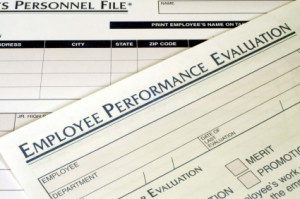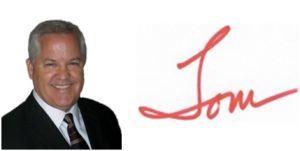 In my long corporate life, I faced this time of year with a mixture of anticipation and dread.
In my long corporate life, I faced this time of year with a mixture of anticipation and dread.
The anticipation came because raises and bonuses were doled out in January and February. The dread was that I had to meet with my manager or supervisor to get my annual performance review. (It was never clear if these meetings were more painful to them or to me.)
Having been on both sides of the review, I know that many of the meetings were neither helpful nor satisfying.
Why? There is the usual fallacy that feedback given once a year (versus frequently) is effective. (Have you ever noticed that the once-a-year variety is often focused on what happened in the last month?) Another common failing occurs when the review meeting is a one-way communication. That is, the manager “announces” to a passive employee the corporate numerical judgment of the employee’s performance. What about those numbers? You know, the manager gives you a score in each performance area. They tell you that your organization skills are a four. Meanwhile, your innovation rating is 3.75. What do you do with such scores? We could go on and on about the weaknesses of these systems. My blood pressure is being to rise just recalling those days. Repeat, must be calm …
Still, the ideas behind the annual feedback cycle are laudable.
One principle is that the employee deserves honest feedback about their performance. It is even better to have an ongoing feedback dialog throughout the year. Secondly, it is equally important that the organization declare what is important. Many times, the definition of performance categories and scales for the performance signal what is important. Ideally, the categories are highly tailored to specific jobs. That way, the feedback is far more targeted and (potentially) useful. When done well, the review transmits useful information in both directions.
What would a good review for a competitive intelligence person look like?
This is the review that I would give if I was the strategy manager (customer of competitive intelligence) and the one I would like to get if I was the competitive intelligence manager. It contains a difficult set of questions. They are difficult because they are intended to focus on value and impact versus activities and tools. There are 10 fundamental performance areas abd 50 questions to discuss.
A. Decision Influence |
1. How timely was competitive intelligence information in the decision-making process? |
| definition: The cumulative and specific impact of CI information, activities and analyses on significant strategic decisions of senior management. | 2. How tailored was the competitive intelligence efforts to the decision-making styles of our senior leaders? |
| 3. How did competitive intelligence improve or positively affect specific strategies? | |
| 4. How well did competitive intelligence improve the understanding of strategic risks? | |
| 5. How well did competitive intelligence identify or characterize strategic alternatives? | |
| other __________________________________________________ | |
B. Competitor Characterization |
1. How well are key and emerging competitors identified and tracked? |
| definition: The understanding of known and potential competitors’ product, processes, business models and strategies resulting in actionable countermeasures. | 2. How clearly are known competitor patterns tracked for products, markets and strategies? |
| 3. How accurately are competitors’ reactions to our strategic moves forecasted? | |
| 4. How specifically do we understand competitors’ business models, constraints and visions? | |
| 5. How has competitive intelligence been helpful to our sales force to compete better at key customers? | |
| other __________________________________________________ | |
C. Information Distribution |
1. How comprehensively has important information been communicated throughout the company? |
| definition: The proactive transfer of competitive intelligence information and knowledge to key stakeholders throughout the company for their effective use | 2. How well has the competitive intelligence information been understood in each functional group? |
| 3. How has competitive intelligence information needs been addressed with tailored communication vehicles? | |
| 4. How timely has the distribution of competitive information been? | |
| 5. How integrated is the competitive information in commonly used information systems throughout the company? | |
| other __________________________________________________ | |
D. Alert Effectiveness |
1. How are the criteria for competitive alerts evolving based on improved understanding of the competitive environment? |
| definition: The rapid recognition and characterization of key competitive events communicated effectively to key leaders throughout the company to equip them with understanding needed to quickly decide responses. | 2. How has the response time for alert reports improved in the past year? |
| 3. How useful has the alert content been to senior leaders deciding rapid responses to competitive events? | |
| 4. How effectively has the essential information been captured and communicated for key competitive events? | |
| 5. How have alert trends been used to improve proactive competitive intelligence? | |
| other __________________________________________________ | |
E. Trend Tracking |
1. How has the range of relevant trends been expanded, tracked and analyzed? |
| definition: The organized, forward looking monitoring of broad movements that affect the competitive environment leading to specific evaluations about their impact on the company’s current or proposed strategies. | 2. How well characterized are trend rates and their impact in specific timeframes for company strategies? |
| 3. How clearly are triggering events forecasted for each relevant trend? | |
| 4. How are near term trends translated to specific competitive gaps? | |
| 5. How is forward looking competitive intelligence used for strategic planning activities? | |
| other __________________________________________________ | |
F. Organization Leverage |
1. How well are important competitive intelligence questions understood throughout the organization? |
| definition: The intentional, methodical use of (non-CI) people and systems in the company to identify, interpret and respond to competitive threats to the company’s products and strategies. | 2. How easily are relevant internal experts identified for various competitive issues? |
| 3. How effective are meetings that are meant to share and interpret competitive information? | |
| 4. How are systems and tools used to establish accessible repositories of competitive intelligence information? | |
| 5. How regularly do employees contribute ad hoc information about competitors? | |
| other __________________________________________________ | |
G. Process Development |
1. How have the process definitions for common competitive intelligence activities improved? |
| definition: The ongoing improvement of common competitive intelligence activities through better documentation, execution and evaluation of various competitive intelligence processes. | 2. How accessible and relevant are process definitions to the actual execution of competitive intelligence activities? |
| 3. How are external vendors’ or competitors’ processes and tools benchmarked to drive internal improvement? | |
| 4. How accurate are time and resource estimates for competitive intelligence projects? | |
| 5. How effectively can new people be trained and integrated into the competitive intelligence role? | |
| other __________________________________________________ | |
H. Responsiveness |
1. How well has the delivery of competitive intelligence analyses met the schedules of senior leaders? |
| definition: The timely provision of interpreted information to answer strategy leader questions, identify emergent threats and influence decision making appropriately. | 2. How far in advance have competitive alerts been issued for possible competitive threats? |
| 3. How quickly have emerging threats been analyzed to produce possible strategic responses? | |
| 4. How regularly has tracking competitive information been delivered throughout the organization? | |
| 5. How efficiently have interpretations been discussed and finalized among key participants in the company? | |
| other __________________________________________________ | |
I. Interpretation Usefulness |
1. How has competitive intelligence driven discussions about the overall competitive environment? |
| definition: The processing of data and information to furnish useful context, options and recommendations about the competitive environment for strategy leaders’ consideration. | 2. How well has data been synthesized to produce broad conclusions about the competitive environment? |
| 3. How has focus shifted from accumulation of the information to meaningful conclusions about the data? | |
| 4. How have senior leader strategic sensitivities been incorporated into the presentation of results? | |
| 5. How have justifications for recommendations, options and observations been prioritized versus conclusions? | |
| other __________________________________________________ | |
J. Competitiveness Influence |
1. How are strategy leaders qualitatively improving the company’s execution based on competitive intelligence? |
| definition: The measured direct and indirect impact of effective competitive intelligence to improve the company’s competitive position. | 2. How are quantitative performance measures improving due to competitive intelligence? |
| 3. How are senior leaders increasing their expectations for the competitive intelligence team? | |
| 4. How has the competitive intelligence scope been enlarged to address offensive and defensive competitive intelligence? | |
| 5. How has the organization’s perception of competitive intelligence and its role changed? | |
| other __________________________________________________ |
Do you have other ways to evaluate competitive intelligence? What categories or questions would you change?
Download a PDF version of this post here.


Social comments and analytics for this post…
This post was mentioned on Twitter by JTHawes: Competitive Intelligence Performance Review: In my long corporate life, I faced this time of year with a mixture o… http://bit.ly/7V1gaj…
[…] Competitive Intelligence Performance Review […]
Hi, this assessment tool is an essential and effective tool that should be utilized by everyone who evaluate the add value of the CI department using decision makers’ perspective. It can be utilized for determining the “Top-level management control of CI” a dimension included in the “World-Class CI Function model” that John Prescott and I have been developing.
Alessandro,
I’m glad you found this tool valuable. Thanks for your feedback.
Tom Hawes
[…] Strategically Thinking » Competitive Intelligence Performance Review […]